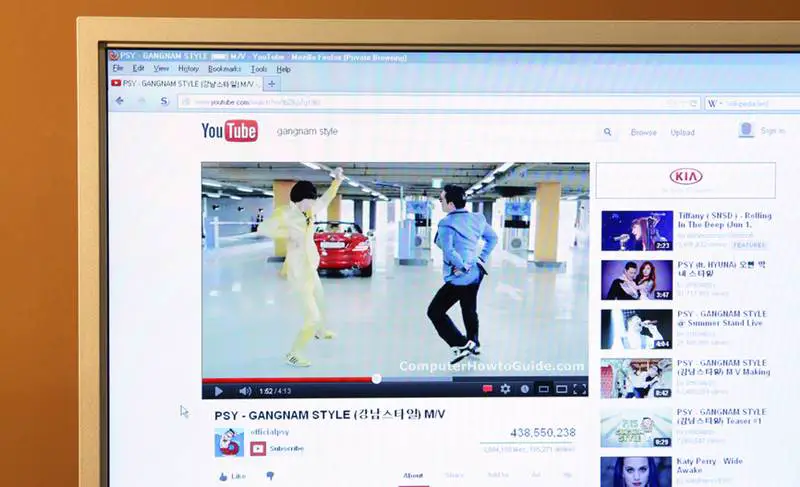Social influencer marketing has gone from being just an industry buzzword to a burgeoning and very successful marketing strategy that businesses – small, medium and big- can use to drive tons of traffic, generate new leads, convert new customers, grow their revenue and boost profits.
In fact, studies have shown that most well designed and executed influencer marketing campaigns typically generate between $3 and $11 for every dollar spent on the campaign. That’s a ROI of between 300 and 1100 percent, which is huge.
This is possible because influencer marketing is largely predicated on relationships. There’s considerable trust between the influencer and their audience. In fact, Velocity Digital estimates that 61 percent of consumers bought a product or hired a service courtesy of a blog recommendation, while The Abbi Agency says it might actually be as high as 81 percent.
With numbers like this, it is not surprising that many businesses and organizations are increasing their influencer marketing ad spend by at least 60 percent. That’s more than most businesses are typically willing to spend or invest in a marketing campaign. But then, if you’re making 300 percent on every ad campaign, it does make sense that you would want to scale as quickly and as efficiently as possible.
As with all things however, successful influencer marketing is an art. It’s not as simple as just looking for someone with huge followership and paying them to promote your products.
Determining the right demographics is incredibly essential to your success.
There are many factors responsible for successful influencer marketing campaigns. But chief among these are three factors:
• Finding the Right Influencer
• Influencer’s Willingness to Becoming Brand Advocate
• Influencer’s Target Demography
Finding the Right Influencer
There are various ways to approach this. You can either do this manually by scouring all the social media networks and blogs in your niche for popular social media personalities, attending industry conferences and observing the speakers who frequently pop up, and seeking out popular blogs.
Or, you can take advantage of available technologies like Neoreach where you already have pre-selected, vetted and proven influencers looking to work with the right brands for the right price. This brings us to the next factor:
Influencer’s Willingness to Becoming Brand Advocate
The second one speaks for itself. Influencers are typically careful about what brands to associate with and what kinds of message they post to their audience. For many of them, they represent a cause, an idea… something they believe in. Therefore, whatever product or brand they’ll be promoting to their audience has to line up with their beliefs, ideologies and passions.
For them, it’s not really about the money –that’s just a very good perk-, it’s more about their impact, delivering value to their audience and them creating a movement of sorts.
Bottom line, if it will not really benefit their audiences or the message contradicts their ideologies, they may never promote the brand. Worse still, they could actually write scathing criticisms of the brand.
This is why an influencer in the organic garden niche, may never promote non-organic gardening products, regardless of how much the brand is willing to pay.
Influencer’s Target Demography
The role of follower demographics in the success of an influencer campaign is extremely crucial. This is what determines if your campaign bombs or succeeds on the scale that you would like. Here are some important things to take note of:
Reach Isn’t as Important as Influence
Yes, it’s not enough for an influencer to reach millions of people at once. If that is what you want, you might as well contact celebs with millions of followers to tweet about your brand –not that you would get commensurate results.
For instance, if you are targeting weightlifting aficionados, an influencer with 3 million followers whose interests lie in everything from fashion to weight lifting won’t get you as much result as a very specific influencer with 150,000 subscribers who are hardcore weightlifting enthusiasts.
You want influencers with the right audience. And many real social influencers can provide that as well as get you a healthy ROI seeing as their audience and followers think of them as real and very honest.
Read also: How to Hide Your Following on TikTok
Target Demography is Important
In fact, the more specific your target influencers and their audiences are, the better your results. This is where demographic segmentation plays a critical role. Take the following into consideration when doing your demographic segmentation (remember the more specific you can get, the better your results will be):
• Age range of the target audience e.g. 18-45 years.
• Social media platforms e.g. there are more women earning between $50k a year and interested in fashion, food, beauty and women’s health on Pinterest, while teens prefer using Snapchat
• Sex e.g. male and/or female. Instagram users comprise of 51 percent male and 49 percent female
• Interests e.g. food, fashion, beauty, cars, personal development.
• Rabid engagement e.g. ratio of audience to engagement per post. Lookout for metrics such as retweets, favorites, likes, shares, syndication, discussions, subject matter knowledge and so on. If an influencer has 200,000 followers and generates less than 200 “interactions” per message, you know they probably won’t get you as much result as the fellow who has just 60k followers and generates between 300-2,000 interactions per post.
• Audience geographical location e.g. where they are located and how much of them you want purchasing your products or spreading the word about your brand.
• Content formats and tone e.g. what content forms are the audience most receptive to: Images, videos, texts and/or slides?
• What’s the general influencer and audience tone: humor/informational/witty/lighthearted or semi-formal/conversational/educative/fun?
• Familiarity with similar content e.g. is this the first time the influencer will be doing this or have they posted a sponsored message in the past? What was their audience’s response to the message? Receptive, antagonistic, warm or indifferent?
• Previous campaigns performance metrics. Lookout for Earned Media Value and ROI –if any.
Tools like Neoreach’s Influencer and Buzzsumo can help make your audience segmentation very easy, identify leading content in the niche and industry, show leading influencers and provide you with better insight.
Tech Plus Human Eye
While the technology crunches the numbers and shows you what is possible, you also need the human element. After you’re done “drilling down” and ascertaining your best influencer choices, it’s time to do some interaction.
You need to get involved with the influencer, observe their activities, check their content quality, monitor audience response and reaction, endeavor to understand them as well as their perceptions and inclinations.
Eventually, humans have to vet the influencer’s content authenticity, quality and credibility. This will help you create an excellent message that their audience would absolutely love, resulting in a winning situation for everyone involved.
Wording the Message Appropriately so the Audience Can Connect with it
Sponsored messages through social influencers can be designed to be compelling, world class and persuasive. But sometimes, simple works too.
Depending on the platform, it can simply be as simple as posting interesting images representing your brand or products, or long form content like Netflix’snative ad for the Narcos TV series on Wall Street Journal.
The point is your message must resonate with the audience and should be presented in a form they are most receptive to for the best results.




